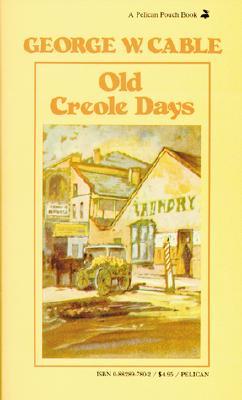Ostensibly romantic in plot, the stories in Old Creole Days recount the adventures, love lives, and misfortunes of Creoles. Cable offers an enchanting portrait of an exotic, alluring New Orleans society, and yet his stories are more than paeans to a long-lost South. Beneath the surface lies a scathing social satire that explores the problems of the racially and culturally diverse antebellum New Orleans.
(from Documenting the American South)
More reading
Link to full text at Project Gutenberg
A concise resume including a short bio of the author – George Washington Cable (from Documenting the American South)
A longer bio from Wikipedia – about George Washington Cable
Old Creole Days – Goodreads entry
Quotes
“The house was of heavy cypress, lifted up on pillars, grim, solid, and spiritless, its massive build a strong reminder of days still earlier, when every man had been his own peace officer and the insurrection of the blacks a daily contingency. Its dark, weatherbeaten roof and sides were hoisted up above the jungly plain in a distracted way, like a gigantic ammunition-wagon stuck in the mud and abandoned by some retreating army. Around it was a dense growth of low water willows, with half a hundred sorts of thorny or fetid bushes, savage strangers alike to the “language of flowers” and to the botanist’s Greek. They were hung with countless strands of discolored and prickly smilax, and the impassable mud below bristled with chevaux de frise of the dwarf palmetto. Two lone forest-trees, dead cypresses, stood in the centre of the marsh, dotted with roosting vultures. The shallow strips of water were hid by myriads of aquatic plants, under whose coarse and spiritless flowers, could one have seen it, was a harbor of reptiles, great and small, to make one shudder to the end of his days.”
– from the first story in Old Creole Days

Leave a Reply